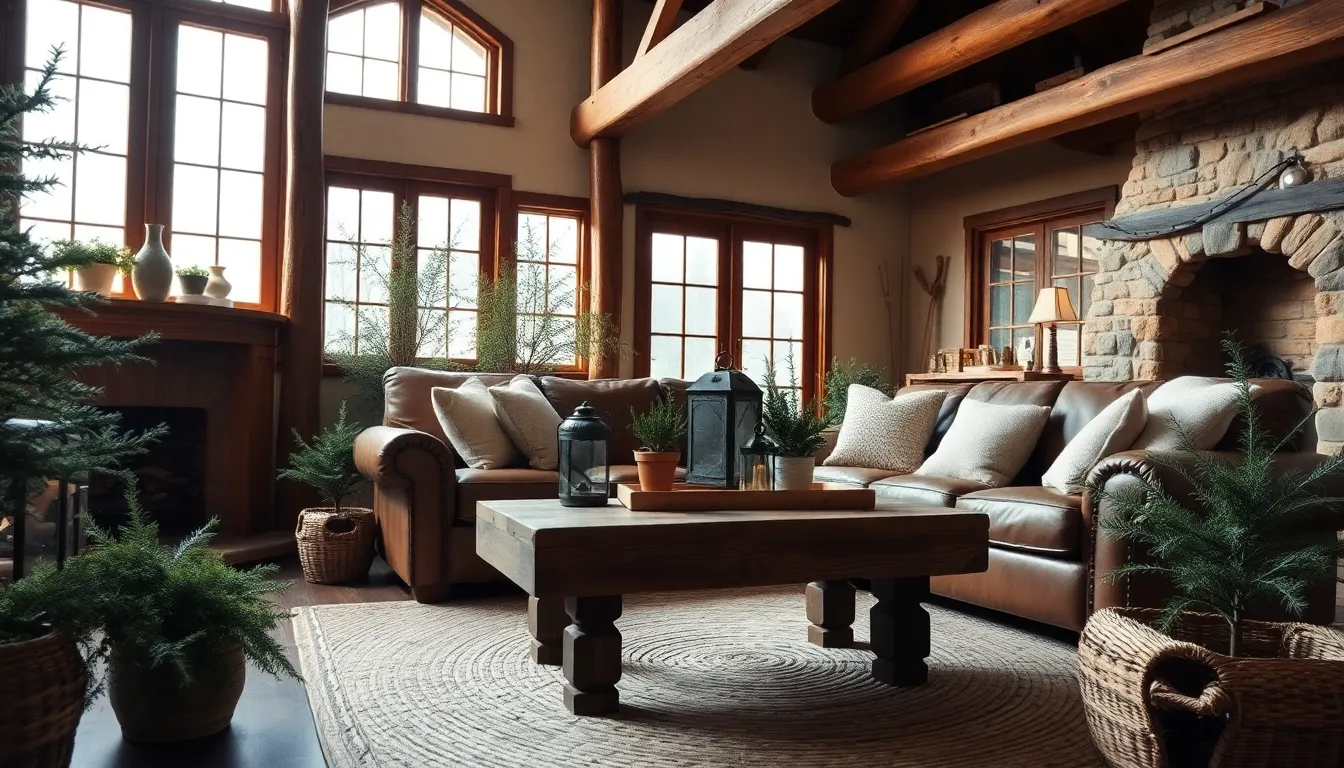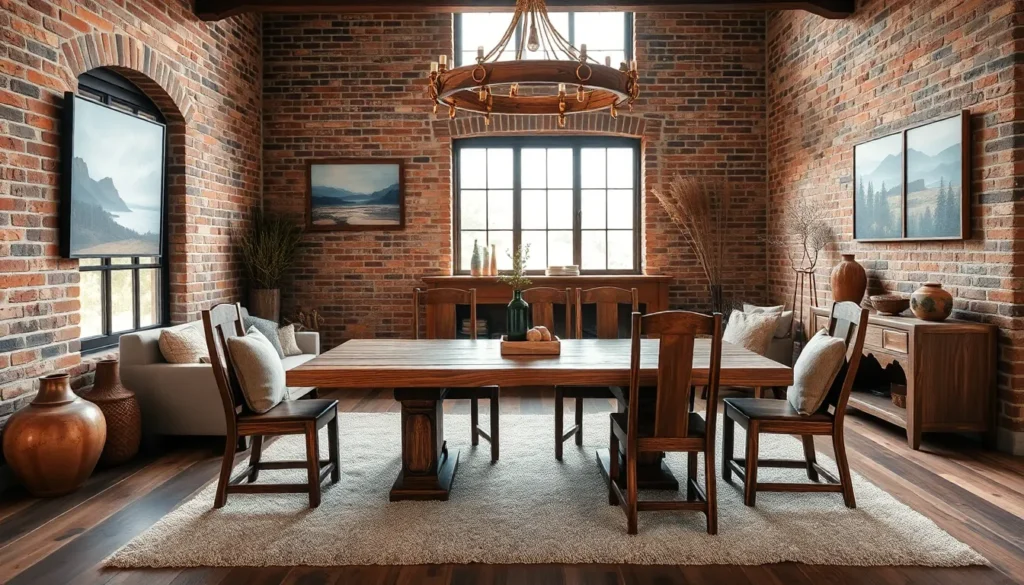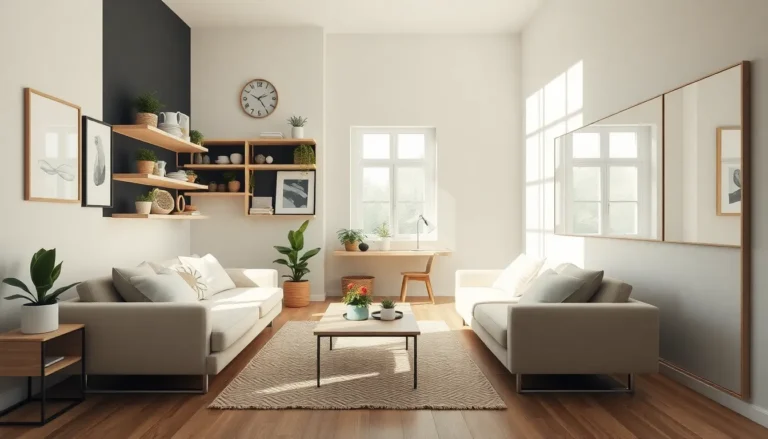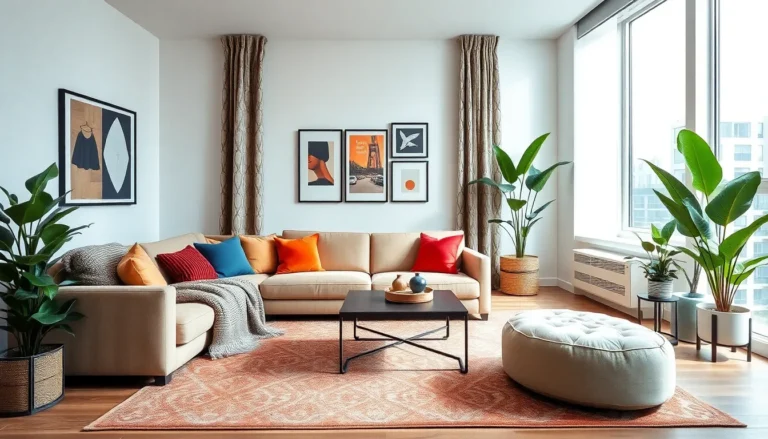Table of Contents
ToggleIf you’ve ever wandered into a cabin and thought, “Wow, I could live here forever.” then rustic interior design might just be your calling. Picture warm wooden beams, natural textures, and that perfect mix of cozy and charming. Whether one craves the serene escape of a country cottage or a warm urban haven that feels like a breath of fresh air, rustic design offers a welcoming embrace, without needing to pack your bags for the mountains. Join us on this journey where we investigate into the essence of rustic style, uncover its key characteristics, and explore tips that’ll help transform any space into a rustic retreat.
Understanding Rustic Interior Design

Rustic interior design is more than just a trend: it’s a lifestyle choice that emphasizes simplicity, warmth, and craftsmanship. This design philosophy draws inspiration from the great outdoors, celebrating natural elements and rugged textures that evoke a sense of comfort. The beauty of rustic design lies in its ability to create intimate spaces that are both functional and aesthetically pleasing. By understanding this design style, anyone can incorporate its charm into their own home.
The essence of rustic design often stems from rural and vintage influences. Imagine visiting a charming cottage where worn furniture tells a story and nature’s palette brings life to every corner. Rustic design also encourages sustainability, often utilizing reclaimed materials that add character and history to a space.
Key Characteristics of Rustic Design
Rustic interior design showcases a distinctive set of characteristics that set it apart from other styles. To truly embrace rustic living, it helps to recognize these elements:
- Natural Materials: Wood, stone, and metal are staples that define the rustic aesthetic. Think unsanded wood tables, exposed brick walls, and wrought iron accents.
- Warm Color Schemes: Earthy tones reign supreme in rustic palettes. Warm browns, soft creams, and muted greens create an inviting backdrop.
- Handcrafted Elements: There’s beauty in imperfections. Rustic design favors handmade furniture and decor, showcasing the artisan’s marks.
- Cozy Textiles: Plush fabrics like wool, jute, and linen evoke warm, tactile sensations. They invite one to curl up and linger.
- Nature-Inspired Decor: Accents like antlers, dried herbs, or wall art featuring landscapes help bring the outside in.
Rustic Color Palettes
Choosing the right colors can significantly elevate the rustic vibe. A good starting point is to draw inspiration from nature. Popular rustic color palettes include:
- Earthy Tones: Shades of brown, beige, and gray mimic the forest floor and elements.
- Muted Greens: Olive or sage green connects the interior with the comforting hues of trees and foliage.
- Warm Accents: Deep reds, rustic oranges, and burnt umbers can be incorporated through accents like cushions or artwork, filling the space with warmth and richness.
- Neutrals: White or creamy shades provide a perfect balance, allowing the richer colors to pop without overwhelming.
Materials That Enhance Rustic Vibes
When it comes to rustic design, the choice of materials matters greatly. Here are some materials that can help achieve that earthy, rustic atmosphere:
Rustic Furniture Choices
- Reclaimed Wood: Furniture made from reclaimed wood not only supports sustainability, but also introduces a historical narrative to homes. Each piece often carries its own unique imperfections that become focal points.
- Natural Stone: A stone fireplace or accent wall adds texture, grounding the interior and creating a sense of permanence.
- Leather and Suede: Choose weathered leather sofas or suede pillows to introduce warmth and richness to the seating area.
Accessorizing a Rustic Space
Accessorizing plays a crucial role in achieving the perfect rustic look. Select decor items that reflect the essence of rustic charm. Here are some ideas:
- Vintage Finds: Thrifted or antique items such as picture frames, books, and pottery can serve as conversation starters.
- Natural Elements: Incorporate plants, branches, or even stones into decor. A simple vase of wildflowers can transform a room, adding a touch of freshness.
- Layered Textures: Combining various textiles, think wool throws over a linen couch, can create depth and interest.
Incorporating Nature Into Your Design
Bringing the great outdoors inside is a key component of rustic design. Here’s how to seamlessly incorporate nature into the design:
- Large Windows: Maximize natural light with oversized windows that offer views of the outside. This connection with nature not only enlarges a space visually but also enhances its warmth.
- Natural Light Fixtures: Consider fixtures made from organic materials, like wooden chandeliers or woven pendant lights that mimic nature’s forms.
- Outdoor-Inspired Decor: Use wall art that features landscapes or breathtaking nature scenes to establish a strong connection to the outdoors.
Tips for Achieving a Rustic Aesthetic
To successfully achieve a rustic aesthetic, follow these tips:
- Start with a Neutral Base: Using neutral walls creates a blank canvas that can easily support rustic accents.
- Mix Old and New: Combining modern furniture with vintage pieces allows for an eclectic yet cohesive look.
- Mind Your Layout: Keep the layout open and airy, allowing the room to breathe and flow naturally.







